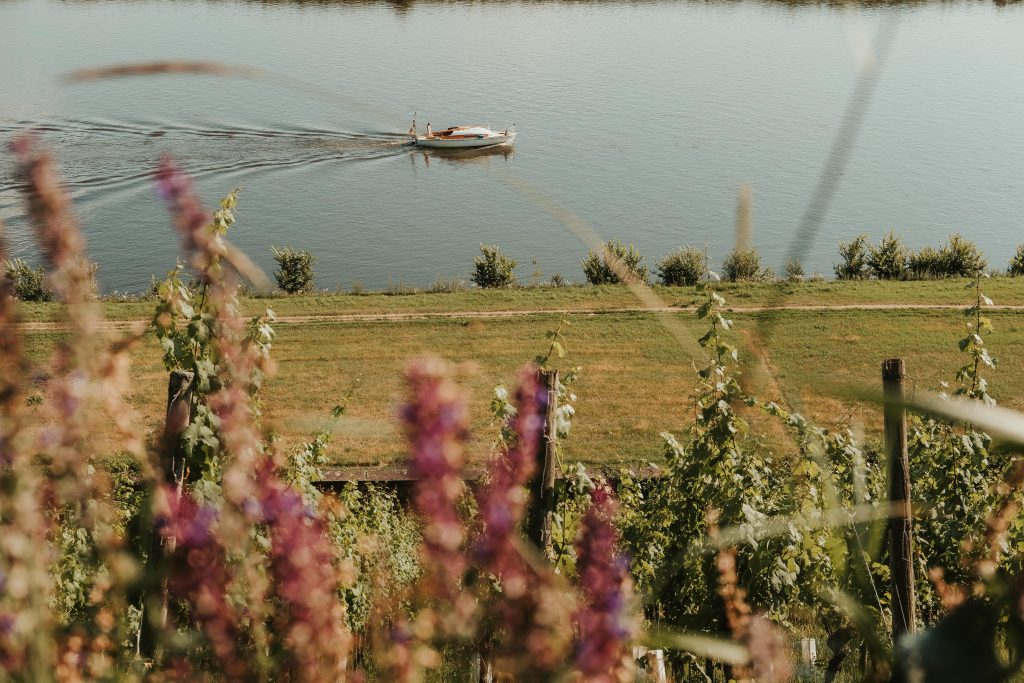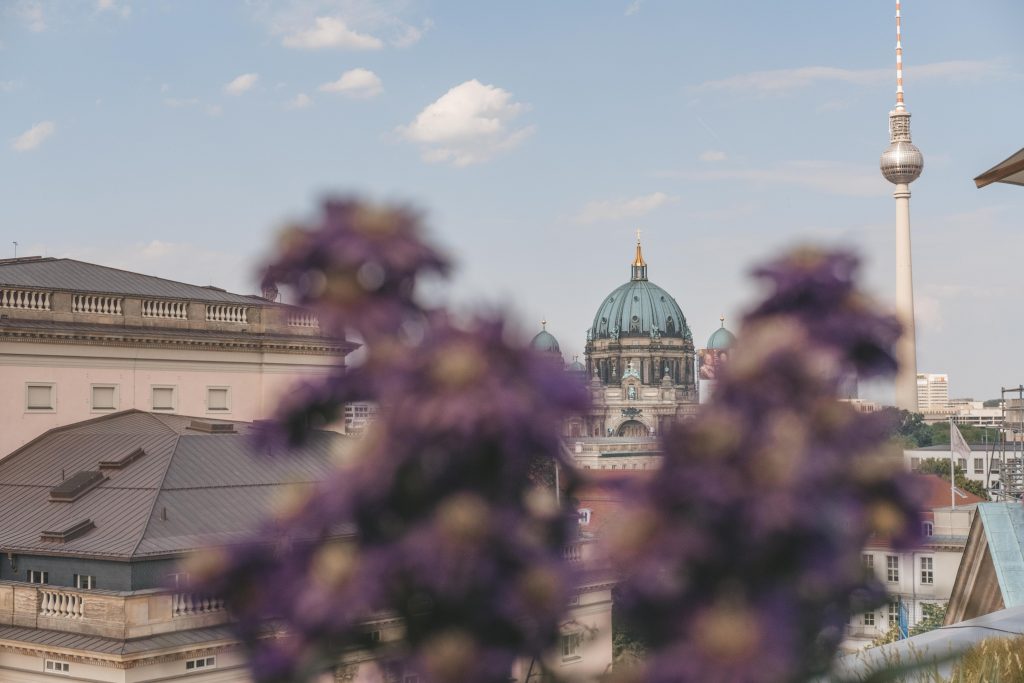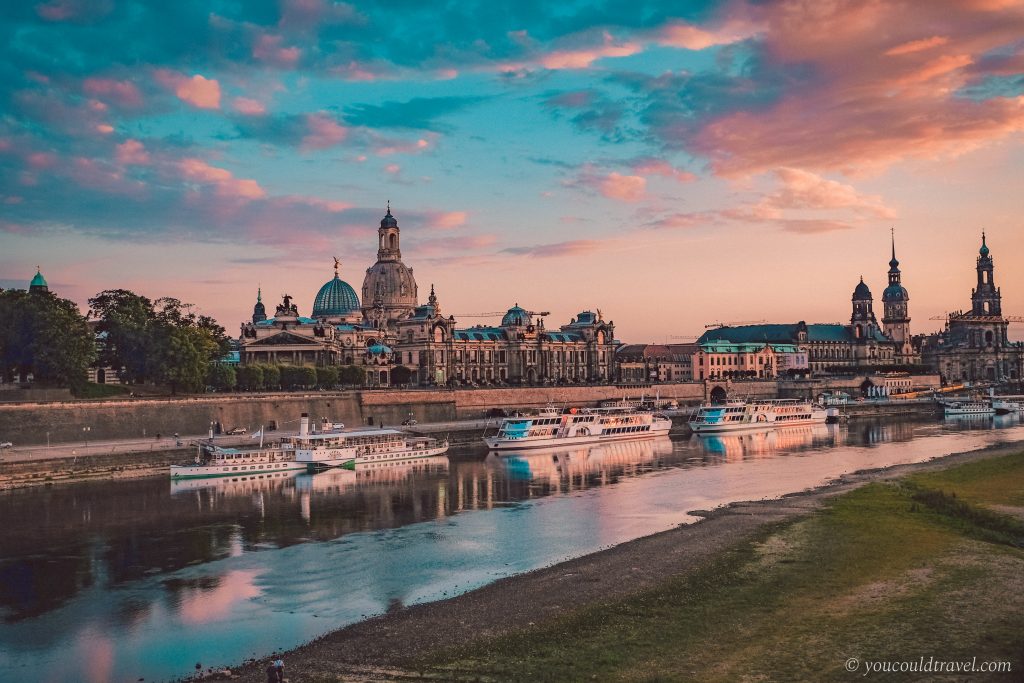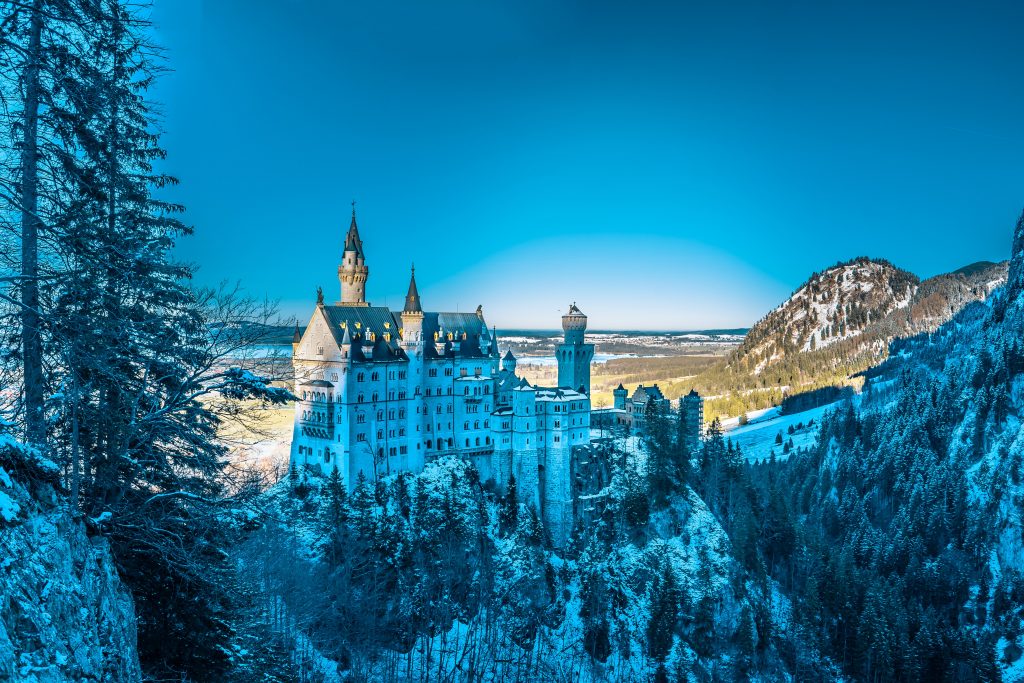The Saxon Switzerland National Park is one of Germany’s most popular national parks. Located in eastern Germany, on the Czech Republic border, it covers an area of 93.5 square kilometres (36.1 square miles). The Park lies within the region known as Saxon Switzerland. Across the border, there is another park in the Czech Republic known as Bohemian Switzerland. Together these two form the Elbe Sandstone Mountains.
Known in German as Sächsische Schweiz, Saxon Switzerland is a hilly climbing area around the Elbe valley in Dresden, Saxony. The Saxon Switzerland Park itself, which covers 93.5 square kilometres is the gem of a larger Nature Conservation Area that stretches over 368 square kilometres on both sides of the River Elbe.
This area is famous largely because of the Elbe Sandstone Mountains with its unique and unusual shape. The flora and fauna in this park are a reflection of the amazing diversity of this unique natural habitat. Here, you can still catch a glimpse of such rare species like the fat dormouse, the eagle owl, and the otter. Mosses, ferns, and lichens thrive in this small ecosystem.
Table of Contents
- A UNESCO recognized World Heritage Site
- Getting to Saxon Switzerland National Park
- By Air and Train
- By Private Car
- Hop onto a Cruise Boat
- Best Time to Visit the Park
- Places to See in Saxon Switzerland
- Bastei Rocks and Bastei Bridge
- Kustal Natural-Arch Formation
- The Picturesque Lichtenhain Falls
- Lilienstein Flat-Topped Mountain
- The Historic Königstein Fortress
- Things to do in Saxon Switzerland
- Hiking and Climbing
- Camping in Saxon Switzerland
- Enjoy the Scenes as you Cycle
- Relax at Bad Schandau
- Useful Tips for Saxon Switzerland National Park
- Book Everything in Advance
- Know the Park Rules and Regulations
- Stock up on Food and Water
- Be Physically Prepared
- Admission and Rules in the National Park
A UNESCO recognized World Heritage Site
The strangely eroded rock formations common in this area, which go back to the Cretaceous period make an unforgettable experience for anyone coming here. With its deeply carved valleys, chalky sandstone cliffs, gorges, and table-mountains, this fascinating landscape is not found elsewhere in central Europe.
In 2004, Saxon Switzerland or Sächsische Schweiz became an official UNESCO World Heritage site. This Park in Germany is made up of two separate areas, Westlicher Bereich (Western Region) and Östlicher Bereich (Eastern Region). Together, these form an area covering about 93 square kilometres (36 square miles).
Getting to Saxon Switzerland National Park
One of Germany’s 16 national parks, the Saxon Switzerland National Park is located in Saxony in the country’s eastern part. It lies about 18.6 miles (30 kilometres) southeast of Dresden, the capital city of the state of Saxony.
By Air and Train
If you want to travel by air, the nearest airport is in Dresden. Other airports nearby include Leipzig and Prague. You can catch a train from each of these airports to the park. If you are coming from other parts of Europe, Deutsche Bahn connects well with Saxon Switzerland National Park.
Regional trains leave every 30 minutes from Dresden and stop at the towns of Bad Schandau, Kurort Rathen, Königstein, Obervogelgesang, Pirna, and Stadt Wehlen which are all close to the park.
By Private Car
You can, of course, choose to drive to the park although the roads are somewhat more complicated. One advantage of using a private car is that you can leave your car closer to the free park entrance.
Hop onto a Cruise Boat
Want a hugely enjoyable way of getting to Saxon Switzerland from Dresden? Try a cruise boat. This is not only fun but gives you the opportunity to enjoy the pristine nature as you cruise.
Best Time to Visit the Park
Every year, it is estimated that over 1.7 million visitors flock to the Saxon Switzerland National Park. This inevitably results in an extremely high visitor density, particularly in the western sections of the park.
Known for its unique and fascinating landscape, the park is one of a kind in all central Europe. So spare adequate time to wander around and see what is on offer. We can assure you that no matter whether you are going to explore by cycle or on foot, the scenery here is simply unforgettable.
If you can, time your visit for autumn. At that time, the colours are simply stunning. Summer and spring are equally great if you want to hike or cycle. If you can only manage to be there in winter or perhaps you encounter bad weather when in the park, there is a way out. Simply warm up at the spa town of Bad Schandau, open throughout the year.
What about the crowds if your visit is only possible in summer? Timing is everything. For example, Bastei gets about 1.5 million tourists per year and you wouldn’t want to be swallowed up in the crowds. Why not try waking up early and enjoy the sites before everybody else arrives? Alternatively, the late afternoon could be ideal when others are leaving.
Places to See in Saxon Switzerland
Whether you want to take a day trip or spare several days to explore, this world-famous National Park is guaranteed to mesmerize you with its varied and unique biodiversity.
Bastei Rocks and Bastei Bridge
The most recognizable site and the park’s main symbols are the Bastei Rocks and the Bastei Bridge. This is a series of jugged sandy mountains that rise 194 meters above the River Elbe. A massive stone bridge has been erected over these rocks to give tourists great viewpoints. The Bastei Bridge is over 200 years old.
The Bastei is also home to the ruins of the ancient Neurathen Castle (Felsenburg Neurathen). What adds a unique angle to the Bastei Bridge is that it seems to have naturally merged with the jugged rocks to give a surreal sight. You are free to stroll along the bridge as you enjoy panoramic views of the towering rocks and vast stretches of the Saxon Switzerland National Park. And best of all is that entry is free.
Kustal Natural-Arch Formation
On the extreme end of Saxon Switzerland lies Neue Wildenstein. Here you will find the 2nd-largest natural arch anywhere in the Elbe Mountains. Since the 19th century, the 17-meter wide and the 11-meter high natural arch has been one of the main park attractions.
This natural rock formation, 24-meter deep, owes its name to how it was formerly used; a cattle stall. Above this formation, you can visit what remains of an old castle complex. This can be accessed through the Jacob’s Ladder (Himmelsleiter), a staircase created in a narrow, small rock tunnel.
The Picturesque Lichtenhain Falls
One of the most beautiful and picturesque sites in Saxon Switzerland is Lichtenhain Falls. This is also perhaps the first attraction that tourists flock to. It is said to have begun modestly in the early 19th century when a local resident started a restaurant near the waterfall. Later he set up chairs outside for relaxing and since then it has never looked back. Today, it forms the centrepiece of the park as several hiking trails start there.
Lilienstein Flat-Topped Mountain
This is one of Saxony’s most distinctive mountains. The Lilienstein is also a key symbol of the Sächsische Schweiz (Saxon Switzerland). It’s the only flat-topped mountain found on the right bank of River Elbe. Found 15 kilometres to the east of Pima, the 415-meter high Lilienstein flat-topped mountain is a sight to behold. You can take any of the two paths that lead to the top of the Lilienstein. On the other side of the river, across from the mountain stands Königstein fortress.
The Historic Königstein Fortress
A visit to the Königstein Fortress is a must when in Saxon Switzerland National Park. It’s at this ancient fortress where you get the opportunity of walking where kings and princes once walked. You also get to learn about the time when the fortress was a prison. The fortress lies on top of the Eponymous Hill. Walk around the 2-kilometre wall of this ancient fortress to get unforgettable views of the Felsenburg Neurathen Park.
Things to do in Saxon Switzerland
Saxon Switzerland National Park is located in the eastern part of Germany, very close to the city Dresden. It offers countless opportunities for adventure and relaxation.
Hiking and Climbing
Love hiking? Saxon Switzerland National Park is a true paradise for hikers. It has over 400 kilometres of paths and trails specially marked for nature lovers. If you are also keen on knowing a bit more about the park’s history, its flora and fauna, you may opt to join a guided hike conducted by a certified park guide.
If rock climbing is something you enjoy, it’s also very popular in Saxon Switzerland. The area has more than 700 peaks waiting to be climbed. We cannot fail to warn you about the importance of ensuring you have adequate equipment and are properly dressed.
If you don’t wish to climb but still want to enjoy some fresh mountain air, you can use the easier marked mountain trails.
Camping in Saxon Switzerland
In general, German national parks don’t allow people to just camp anywhere along the park trails. This could somewhat make pitching a tent for camping more difficult. We will, however, let you into a well-guarded secret regarding camping in the Saxon Switzerland National Park. Deep within the park, there are boulders and caves, known as Boofe, which are excellent at providing a roof over your head.
For decades Boofe has been used by climbers who love exploring vertical routes along with the park’s magnificent sandstone towers. This rock-climbing tradition is officially tolerated in Saxon Switzerland and you can camp, rest, and sleep under these natural structures whether you are a climber or not.
Enjoy the Scenes as you Cycle
If you love cycling, you cannot go to a better place than Saxon Switzerland. In particular, the Elbe Cycling Route is ranked among the best among what Germany has to offer in terms of long-distance routes. This is a great way of exploring the region’s beauty. If you feel up to it, you can start in the city of Schöna and ride towards the Baltic Sea or the Czech Republic.
Perhaps you want something more modest? The park also has a couple of nice one-day cycling trips. The area being very flat is very conducive to easy cycling. Get the weather right and you will thoroughly enjoy cycling in Saxon Switzerland.
Relax at Bad Schandau
What better way to cap your Saxon Switzerland day than to relax at Bad Schandau? Situated on the banks of Elbe River, this is one of the Park’s most visited places. The quiet spa town of Bad Schandau is an excellent place to relax and recharge the batteries.
Useful Tips for Saxon Switzerland National Park
Established in 1990, the Saxon Switzerland National Park is a good place if you love nature and natural formations. To make your visit a roaring success, something that will always live in your heart, we have several handy tips for you.
Book Everything in Advance
To start with, many people are coming and leaving the park by public transport and, therefore, it makes lots of sense to buy your tickets well in advance.
Know the Park Rules and Regulations
Within Saxon Switzerland National Park, it’s not permitted to build fires except on fire pits that have been specially made for picnics and grilling. Note that you will need your own firewood if you want to use any of these grilling sites.
In the park’s restricted zone, you are only allowed to use the marked paths and trails. Cycling is also only permitted on special trails. This one might disappoint you: picking mushrooms and forest fruits is not allowed unless done for your personal purposes.
Stock up on Food and Water
Ensure you carry plenty of water and food with you – the restaurants within the park are relatively expensive. Besides, there is no guarantee that when you want to buy or eat/drink something you will also be where the restaurants are located. Come equipped!
Be Physically Prepared
You need to properly estimate your physical strength. Nearly every part of the park consists of hills and mountains. Remember to wear comfortable sportswear. Special attention must be given to shoes – you will be doing lots of going up and down steep valleys and ravines.
In case you got sensitive skin, remember to carry some insect bite remedy.
Admission and Rules in the National Park
Admission to the Saxon Switzerland National Park is free. You can access the Park from all sides. However, in the Park’s core zone, you will have to stay on the sign-posted access paths, climbing, and hiking paths. You can only cycle on the marked routes.
You are advised to park your car outside the National Park zone and only travel using public transport. Entering the narrow gorges of the park in a car mars the true experience of being in a remarkable natural environment. Even the Park’s yellow streetcar is ecologically friendly and partly runs on solar energy.









Leave a Reply